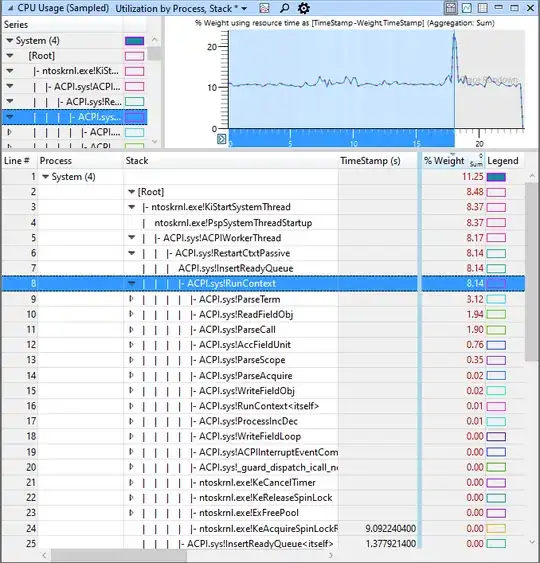I know, yet another post of ACPI.sys sitting atop a CPU core. It's seems a different issue from the other posts, though, please, read on. The other proposed solutions didn't work!
It's a P65_67RSRP notebook, i7-6700HQ processor, Windows 10 64-bit version 1903.
Also, it seems to be a OS-agnostic issue, as it manifested itself also under the installed Manjaro KDE, with process kworker/0:2+kacpid using ~11% CPU!
I was able to fix the issue under Linux by disabling interrupt gpe6F (as suggested here: https://forum.manjaro.org/t/kworker-kacpid-cpu-100/131532)
The problem is that I don't know how to reproduce this fix in Windows!
It seemingly started after I installed a NVMe SSD from Intel alongside the other disks.** The new device model: INTEL SSDPEKNW010T8. So, the computer now has a 240GB PCI-e SSD (disk 0), a HDD (disk 1) and the NVMe (disk 2).
Nothing worked: No solution proposed in https://superuser.com/a/1164299/511946 worked. I've tried installing Intel drivers for the SSD to no avail. Disabling power management options didn't work for any device, network card included. No BIOS updates are due.
I investigated until I reached ACPI.sys as the culprit. I tracked the callstack with MPT and found this:
This image, the fix in Linux and the new SSD are certainly clues, but I can't figure them out.
Any tips debugging this?
